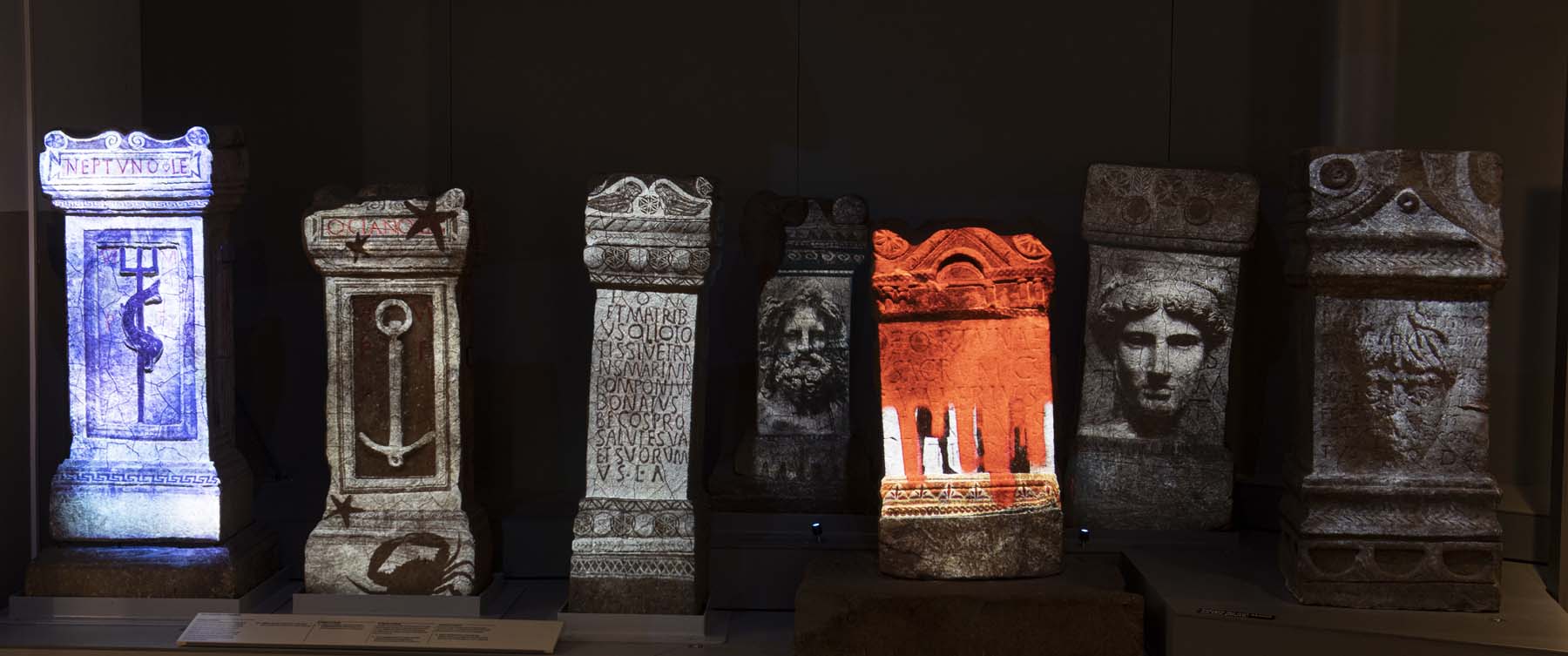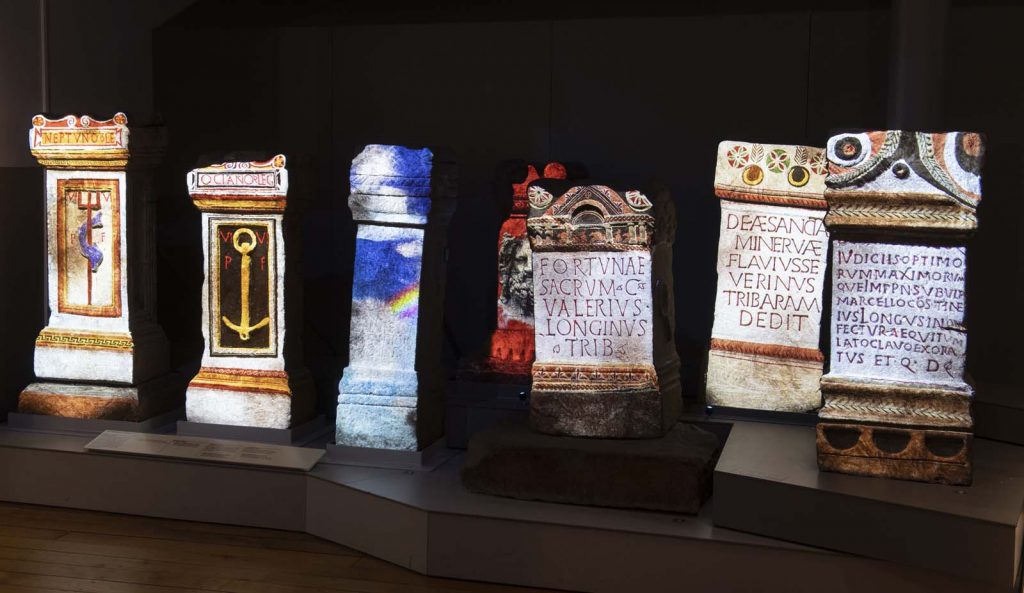
We know that the ancient world is now very colorful. But these colors weren’t just limited to robes and other clothing, statues and buildings also offered an astonishing palette.
Roman Britain was a place of vibrant color even in the far north. Pliny the Elder mentioned the orange, red, and purple clothes worn by priests and priestesses in addition to the deep red robes of the Roman legions, while popular dyes used in the Roman world included madder, kermes, weld, woad, saffron, and lichen purple.
However, these colors were not limited to robes and other clothes; sculptures and buildings also provided a fascinating palette – as can be seen in a new project at the Hancock in Newcastle, which reveals the colors experienced along Rome’s Northern barrier at Hadrian’s Wall.
The museum has a huge collection of altars recovered from Hadrian’s Wall – many with dedications to the dead and inscriptions for Roman gods – and seven of the latter now feature animations projected directly onto the stone surface to show how brightly colored altars appeared 1,900 years ago.

The Roman Britain color display.
The animations also include creative renderings of the altars and gods linked with them. The shrine to Neptune, the Roman deity of freshwaters and rivers, was discovered in the River Tyne, for example. It shows a blue undersea environment teeming with fish.
The altar of the sea god Oceanus is decorated with seaweed, starfish, and a crab, while the altar of Fortuna is dripping with bright red, which may suggest rituals performed using wine or sacrificed animal blood.
Other altars with new animations are devoted to Jupiter, the Roman pantheon’s chief deity, Minerva, the goddess of knowledge and strategic battle, and Antenociticus, a local British divinity only found at Condercum Roman Fort in Newcastle’s west end.
“Working with NOVAK and the Great North Museum: Hancock, the altars come alive and invite you to look more closely at the artistry and information that they hold,” says Dr. Rob Collins, Senior Lecturer in Archaeology and WallCAP Project Manager at Newcastle University.

Altars to Fortuna, Minerva and Antenociticus.
The project, called Roman Britain in Colour, is a collaboration between the Museum and Hadrian’s Wall Community Archaeology Project (WallCAP), working alongside creative studio NOVAK.
“We’re used to the look of sandstone altars and reliefs in museums but we forget that they were originally painted in bright colors,” says Andrew Parkin, the Museum’s Keeper of Archaeology. “The paint has been lost over the centuries but researchers have found trace amounts of pigment using ultraviolet light and x-rays.
“These new projected animations really make the altars stand out and add greatly to the Hadrian’s Wall gallery in the museum. The team at NOVAK has done a fantastic job in creating the artwork and mapping the projections precisely onto the stones.”
source: https://arkeonews.net








